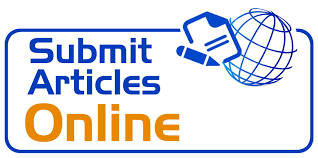Analisis Penyelenggaraan Bimbingan Manasik Haji Di Kantor Urusan Agama Melalui Model Evaluasi
DOI:
https://doi.org/10.15575/jbpd.v3i2.12365Abstract
Community knowledge regarding guidance on Hajj rituals is very limited. Kartasura Religious Affairs Office as a small part of the central government. Have responsibility for providing Hajj ritual guidance training for prospective pilgrims. With the Hajj ritual training is a form of training, in order to improve the skills of pilgrims. Both in accepting and understanding the material delivered in the guidance of Hajj rituals. This research was conducted to describe the 3 points of CIPP evaluation. Input evaluation includes clients (prospective pilgrims), and staff (presenters). Process evaluation (implementation) includes the program (material), and training schedule. Product evaluation (results) includes the results of interviews with pilgrims who have registered guidance for Hajj rituals at KUA Kartasura. Based on the results of the study, the Kartasura Religious Affairs Office provides services to pilgrims in accordance with procedures. Out of a total of 116 pilgrims taking part in the guidance of Hajj rituals at KUA Kartasura. Based on age, education, occupation, presenters, and pilgrimage ritual implementation schedules. It is in accordance with the Decree of the Director General of Hajj and Umrah Management. It's just that there is no manasik guide in KUA Kartasura that does not yet have a Hajj guidance certificate.
References
Choliq, Abdul. (2018). Esensi Progam Bimbel Manasik Haji Upaya Pemberdayaan Masyarakat. At-Taqaddum. https://doi.org/10.21580/at.v10i1.2540.
Hanafi, Arif. (2019). Wawancara dengan Kasi PHU Kabupaten Sukoharjo. Sukoharjo.
Kementerian Agama RI. (2010). Dinamika dan Perspektif Haji Indonesia. Jakarta: Direktorat Jenderal Penyelenggaraan Haji dan Umroh.
Kholilurrahman, Kholilurrahman. (2017). Hajinya Lansia Ditinjau Dari Perspektif Bimbingan Dan Konseling Islam. al-Balagh : Jurnal Dakwah dan Komunikasi 2 (2). https://doi.org/10.22515/balagh.v2i2.1021.
Kusnandar, Arianto. (2017). PMA 42 Tahun 2016.https://www.kemenag.go.id/files/www/file. 2017.
Moleong, Lexy J. 2019. Metodologi Penelitian Kualitatif (Edisi Revisi). PT. Remaja Rosda Karya. https://doi.org/10.1016/j.carbpol.2013.02.055.
Noor, Muhammad. (2018). Haji dan Umrah. Jurnal Humaniora Teknologi. https://doi.org/10.34128/jht.v4i1.42.
Nurfarisky, Meidina. (2018). Evaluasi Bimbingan Manasik Haji Di Kementrian Agama Kabupaten Semarang Tahun 2017.
Rejeki, Sri. (2014). Evaluasi Progam Bimbingan Manasik Haji Pada KUA. UIN Syarif Hidayatullah.Jakarta.http://repository.uinjkt.ac.id/dspace/bitstream/123456789/43301/1/SRI%20REZEKI-FDK.
RI, Kementrian Agama. (2009). Undang-undang Republik Indonesia Nomor 13 Tahun 2008 Tentang Penyelenggaraan Ibadah Haji. Dirjen PHU.
Siregar, Syofian. (2013). Metode Penelitian Kuantitatif. Jakarta: Kencana.
Sugiyono. (2010). Metode Penelitian Bisnis. Pendekatan Kuantitatif, kualitatif dan R & D. Bandung: Alfabeta.
Tayibnapis, F. Y. (2000). Evaluasi Program Pembelajaran. Jurnal Ilmu Pendidikan.
Yusuf, Muri. (2016). “Metode Penelitian Kuantitatif, Kualitatif & Penelitian Gabungan - Prof. Dr. A. Muri Yusuf, M.Pd. - Google Books.†Prenada Media. 2016.
Downloads
Published
Issue
Section
License
Authors who publish with this journal agree to the following terms:
- Authors retain copyright and grant the journal right of first publication with the work simultaneously licensed under a Creative Commons Attribution-ShareAlike 4.0 International License that allows others to share the work with an acknowledgement of the work's authorship and initial publication in this journal.
- Authors are able to enter into separate, additional contractual arrangements for the non-exclusive distribution of the journal's published version of the work (e.g., post it to an institutional repository or publish it in a book), with an acknowledgement of its initial publication in this journal.
- Authors are permitted and encouraged to post their work online (e.g., in institutional repositories or on their website) prior to and during the submission process, as it can lead to productive exchanges, as well as earlier and greater citation of published work (See The Effect of Open Access).














